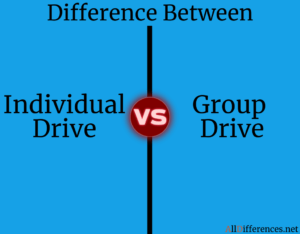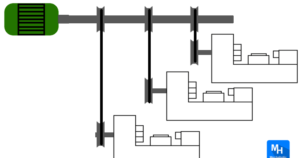Difference Between Individual Drive and Group Drive
Contents
Comparison Between Individual Drive and Group Drive
Summary:
- There are two methods of Drive.
- Individual Drive
- Group Drive
- Mechanical Drives used To vary the speed and torque, To run several machines by a single prime mover, To avoid thrust, shocks, etc. For convenience and safety purposes.

Comparison Chart
| Individual drive | Group drive |
|---|---|
| It is suitable for small size workshop where machines may be moved frequently and machines are scattered over a large areas. | It is suitable for medium and large size workshop where machines are not scattered over large area. |
| Speed of a machine can be controlled separately. | Cone pulleys required to obtain a wide range of speed. |
| Machine shaft can be rotated in any direction. | Difficult to change the direction of the main shaft. |
| Individual machine does not affect other machines when the failure of a motor occurs. |
Failure of the main motor will stop the entire group of machines. |
| Less power is wasted if fewer machines are working. |
More power is wasted if fewer machines are running but more economical when all machines are working in a full load. |
| High initial capital investment. | Less initial capital investment. |
Individual Drive
In the Individual Drive system, each machine tool has its own electric motor which drives the machine through belt, chain, gearing or by direct coupling. The system is also called as a self-contained drive.

Group Drive
The Group Drive system uses a high powered motor which drives an overhead shaft called the main shaft by means of chain or belt. The main shaft runs across the workshop from one end to other ends. The main shaft drives another shaft called counter shaft. Finally, the countershaft drives the group of machines through belting and pulleys.

More Differences
- Difference Between Internal and External Combustion Engine
- Difference Between Vapour Compression and Vapour Absorption System
